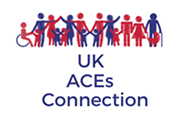By Lotte C. Houtepen, Jon Heron, Matthew J. Suderman, et al., PLOS Medicine, March 2, 2020
Background
Experiencing multiple adverse childhood experiences (ACEs) is a risk factor for many adverse outcomes. We explore associations of ACEs with educational attainment and adolescent health and the role of family and socioeconomic factors in these associations.
Methods and findings
Using data from the Avon Longitudinal Study of Parents and Children (ALSPAC), a prospective cohort of children born in southwest England in 1991–1992, we assess associations of ACEs between birth and 16 years (sexual, physical, or emotional abuse; emotional neglect; parental substance abuse; parental mental illness or suicide attempt; violence between parents; parental separation; bullying; and parental criminal conviction, with data collected on multiple occasions between birth and age 16) with educational attainment at 16 years (n = 9,959) and health at age 17 years (depression, obesity, harmful alcohol use, smoking, and illicit drug use; n = 4,917). We explore the extent to which associations are robust to adjustment for family and socioeconomic factors (home ownership, mother and partner’s highest educational qualification, household social class, parity, child’s ethnicity, mother’s age, mother’s marital status, mother’s depression score at 18 and 32 weeks gestation, and mother’s partner’s depression score at 18 weeks gestation) and whether associations differ according to socioeconomic factors, and we estimate the proportion of adverse educational and health outcomes attributable to ACEs or family or socioeconomic measures.

Comments (0)